The Hammond Novachord was introduced in the 1940’s and was the world’s first analogue synthesizer. Most of these instruments have been destroyed over the years and an operational Novachord is extremely rare today.
I acquired this Novachord from Salem, Oregon. The instrument is presently inoperative but hopefully it will become functional before too long. The instrument is extremely heavy at about 500 pounds and quite large at 57 inches wide and 37 inches deep. Its size is too large to fit through a normal 3 foot wide door. The Novachord has 72 keys with 2 vacuum tubes per note plus another 30 or so tubes for a grand total of about 178 vacuum tubes. The instrument is self-contained with two speakers speaking downward at a 45 degree angle from the center section.
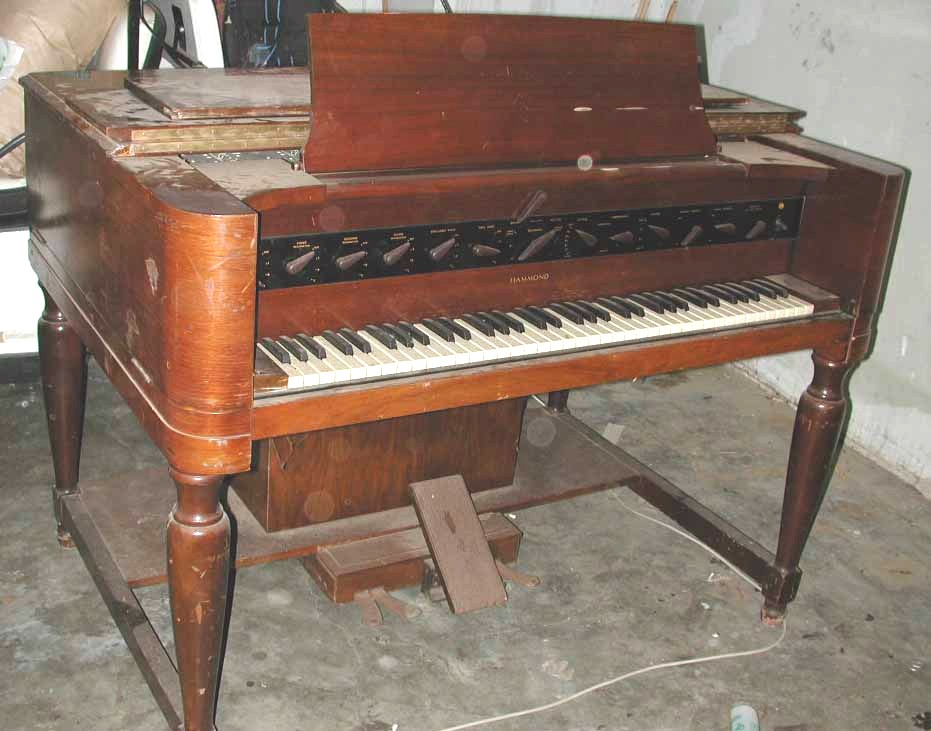
A full view of the Novachord, note the single manual and the three piano type pedals plus the expression or volume pedal. Amplifiers are in the large wood “box” behind the expression pedal, speakers on either side pointing down and to the side at a 45 degree angle.
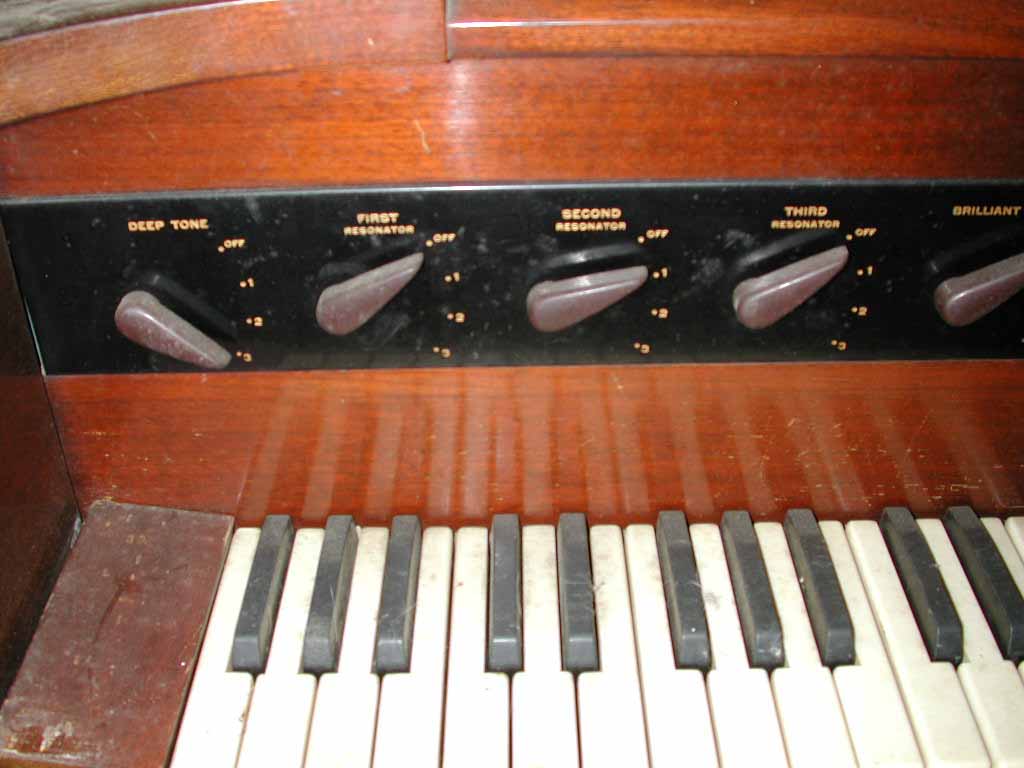
The right side of the keydesk
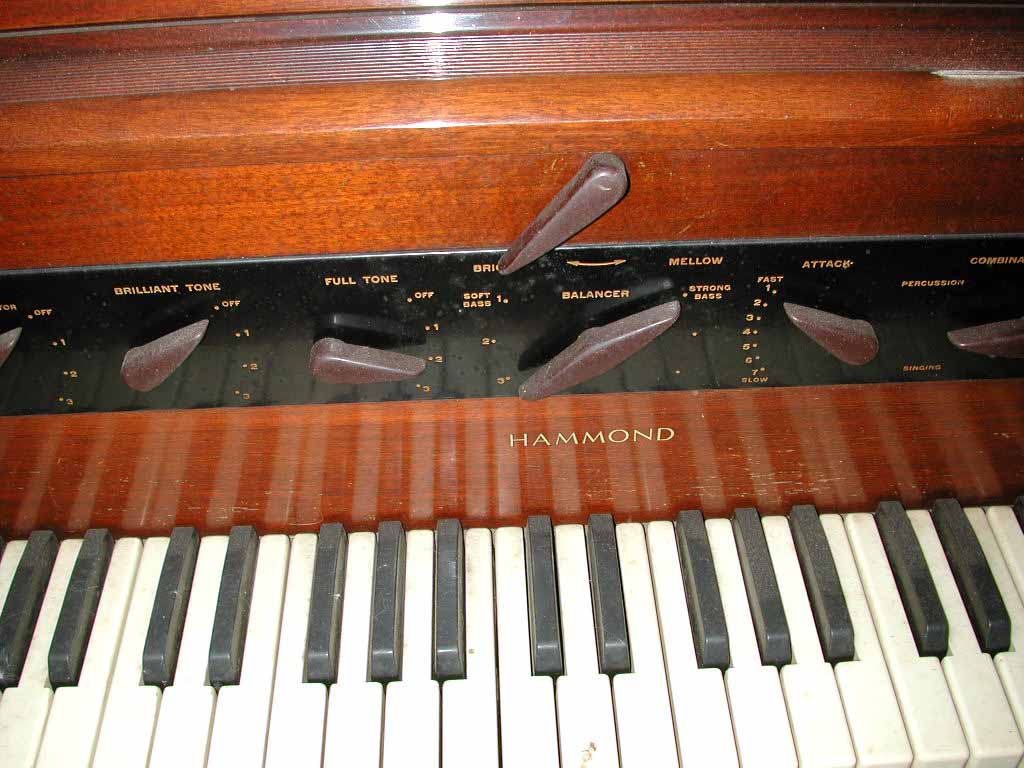
The center section of the keydesk

More of the center section of the keydesk
The right side of the keydesk. The starter lever started the vibrato mechanism.

The full front view
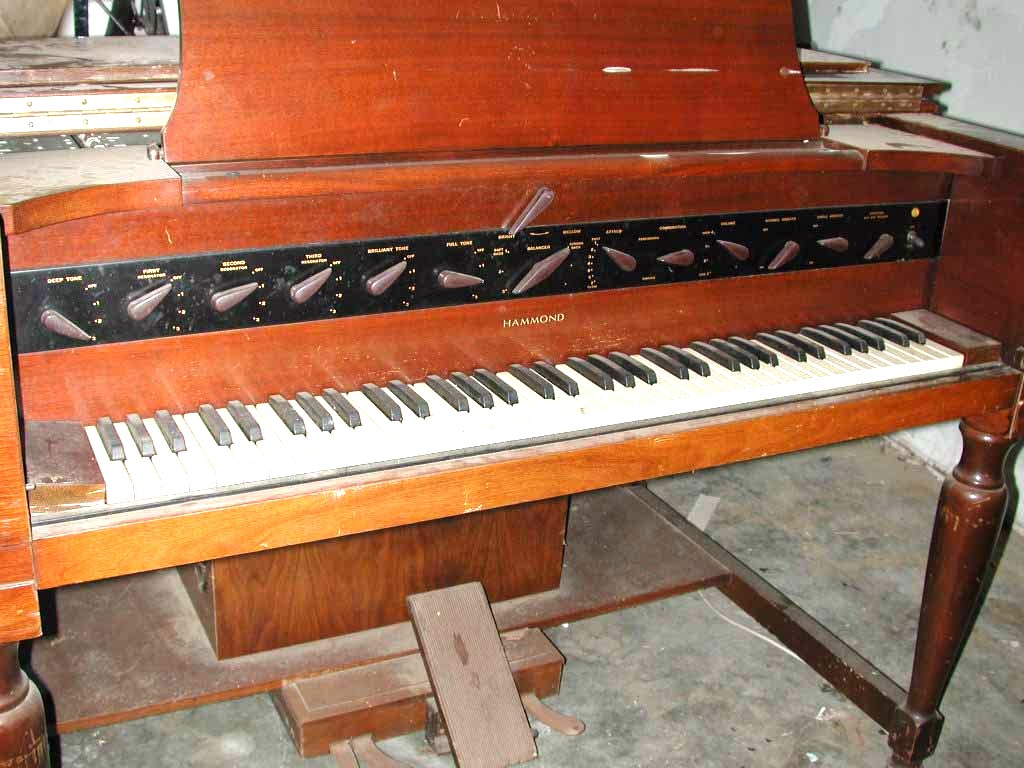
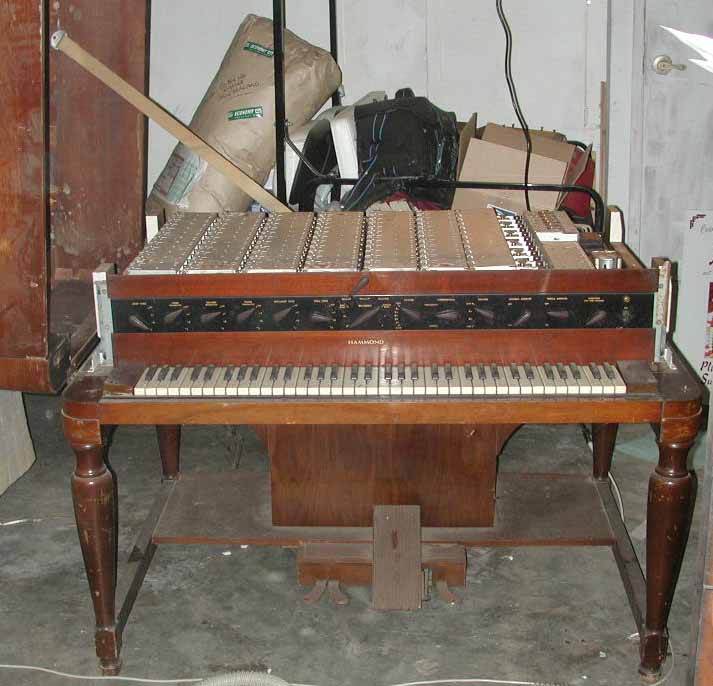
Novachord with the top open, it is hinged on the left side. All of the electronic compartments tops are closed.
View from the right side of all the electronic compartments with their tops closed.

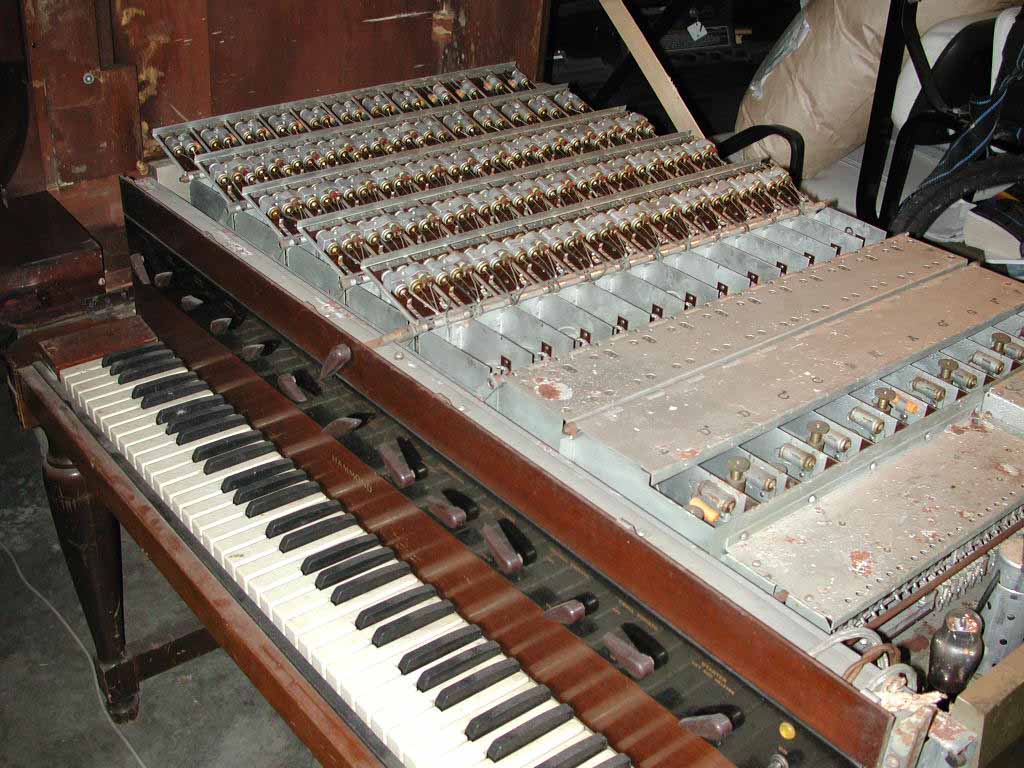
View with the electronic cabinet tops open showing all the capacitors, each little compartment holds two vacuum tubes.
A view of a single keying section, there are five of these sections.
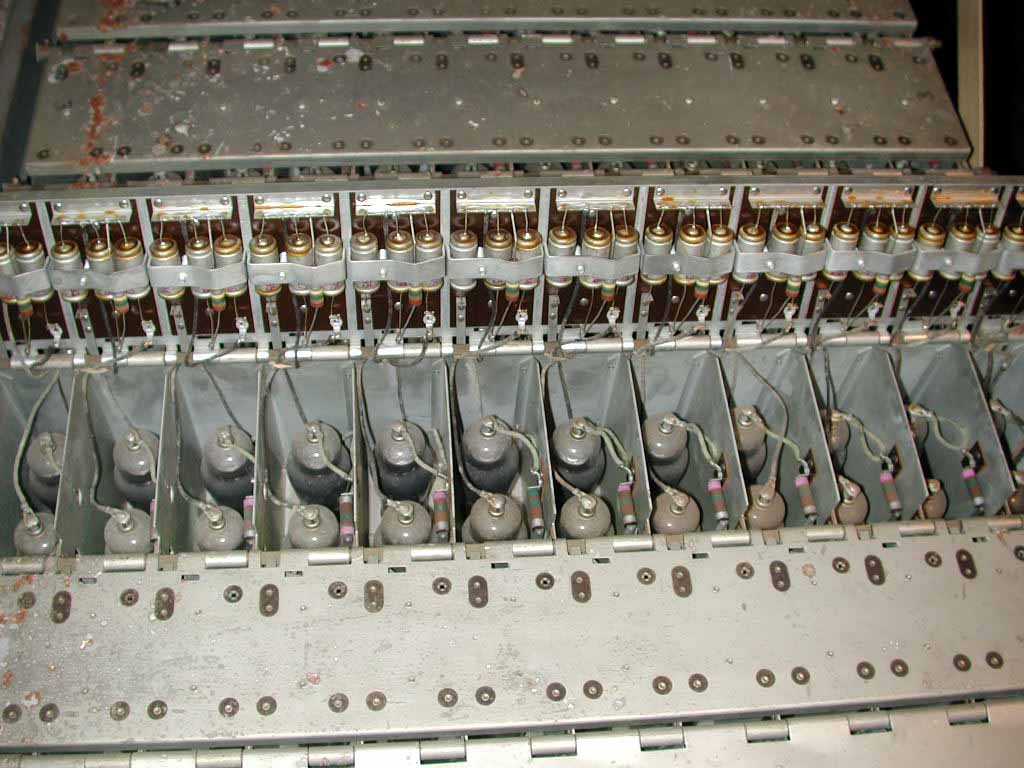
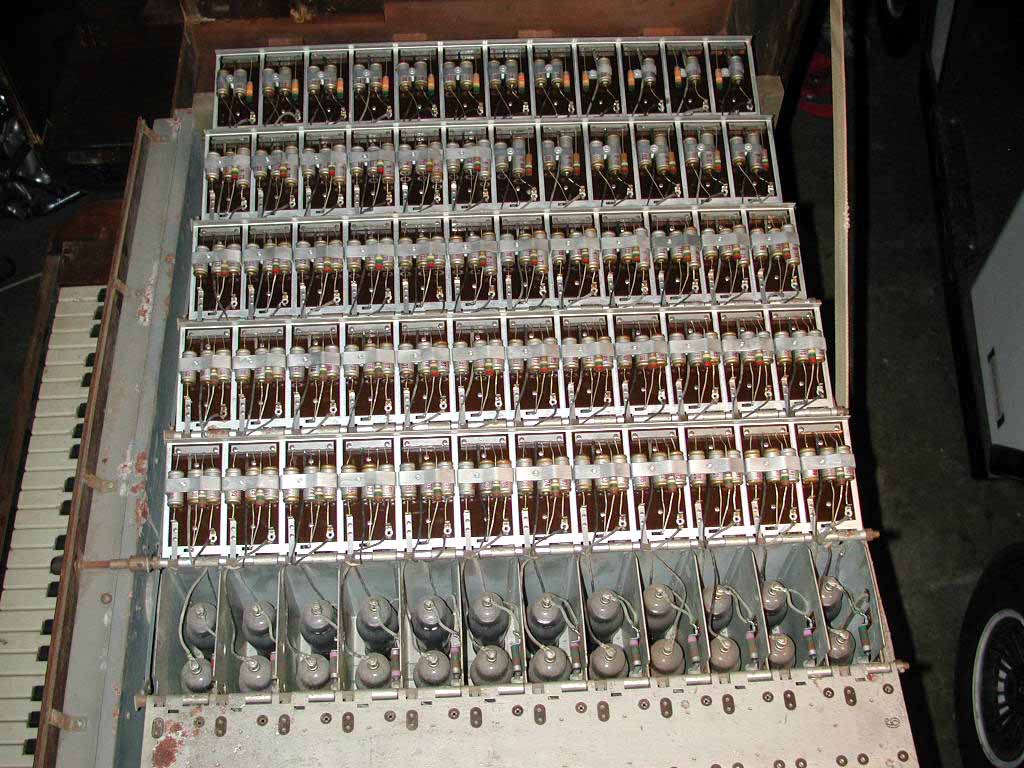
This view shows the five keying banks with the tops open exposing the capacitors, the vacuum tubes are underneath the capacitors.
A view showing the top up. The small label is the guarantee of three years and also a disclaimer concerning the vacuum tubes.


Far right hand side of the Novachord, note the corrosion from probably mice. The instrument has not been wet so one can quite easily guess where the corrosion came from! You can see the pitch oscillators at the top of the picture.
A close up of the pitch oscillators.

Another close up of some of the resistors in the instrument.
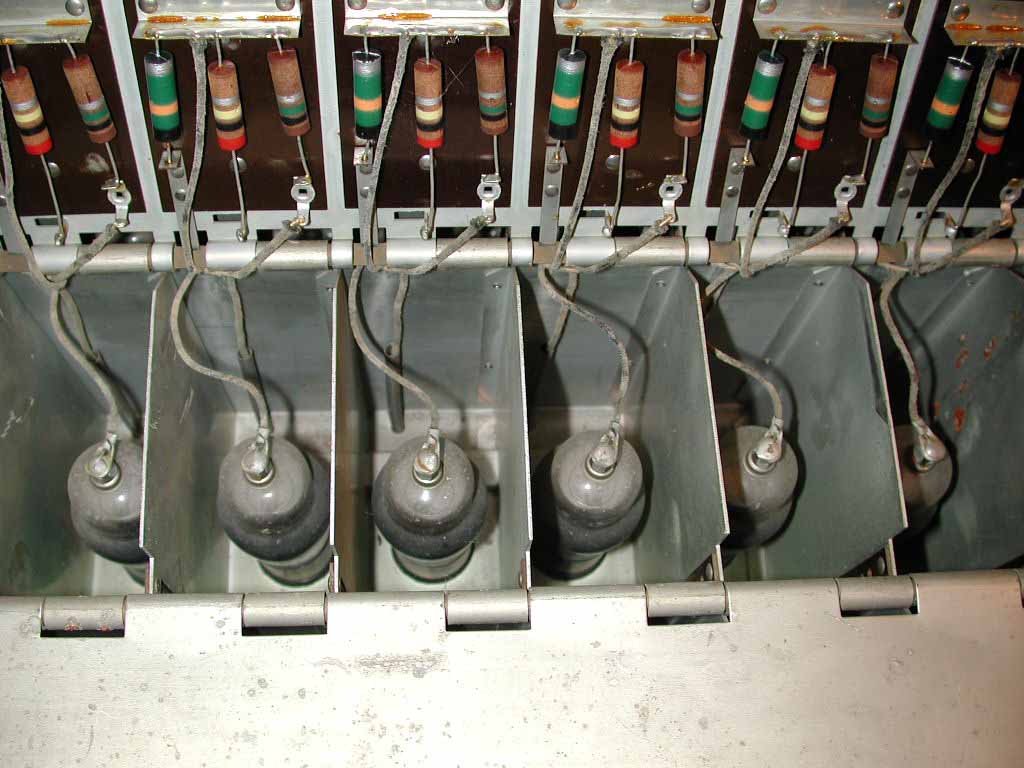

A view of the back of the Novachord.
Viewed from the back, the top chassis is the power supply while the lower chassis is the amplifier. Right speaker is directly above the left side of the picture.

A view with the main chassis in its up position, note the hundreds of capacitors.

A close up of the bottom of the main chassis with its hundreds of capacitors. All total, the Novachord has well over 1,000 capacitors.

This is the right underside of the main chassis with the preamplifier on the right and the vibrato section immediately to its left, keying capacitors are at the far left.

More evidence on mouse occupancy, they had made their nest on keying wires and springs, not too bad a mattress! Unfortunately they broke many wires and a few springs.